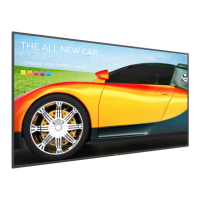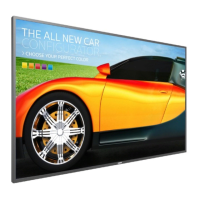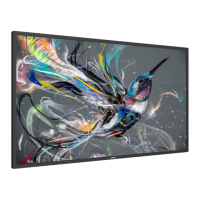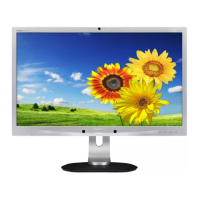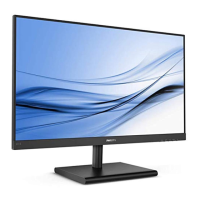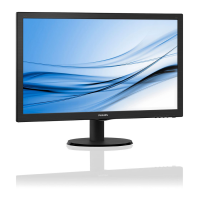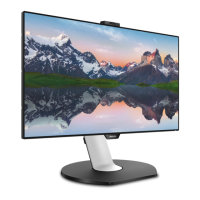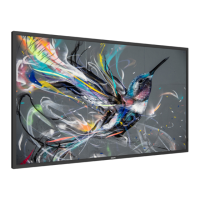
Do you have a question about the Philips Q Line 65BDL3511Q and is the answer not in the manual?
| Screen Size | 65 " |
|---|---|
| Display Type | LCD |
| Brightness | 350 cd/m² |
| Response time | 8 ms |
| Contrast Ratio | 1200:1 |
| Dynamic contrast ratio marketing name | SmartContrast |
| Aspect Ratio | 16:9 |
| Viewing Angle | 178° |
| Touchscreen | No |
| Built-in speaker(s) | Yes |
| Number of speakers | 2 |
| RMS rated power | 20 W |
| DisplayPort quantity | 1 |
| USB version | 2.0 |
| USB ports quantity | 2 |
| Ethernet LAN | Yes |
| Wi-Fi | No |
| VESA mounting | Yes |
| VESA mounting interfaces | 400 x 400 mm |
| Product colour | Black |
| Operating Temperature | 0 - 40 °C |
| Resolution | 3840 x 2160 pixels |
| Connectivity | HDMI, DisplayPort, USB |
Provides instructions on how to unpack the product and check contents.
Lists all items included in the product package.
Important notes and precautions for installing the display.
Guide for mounting the display on a wall, including VESA grid details.
Instructions for installing the display in portrait orientation.
Details the buttons and indicators on the display's control panel.
Identifies and explains the various input and output ports on the display.
Explains the functions of the remote control buttons and operation.
Instructions for connecting external video sources like DVD players.
Guides on connecting a personal computer using DVI or HDMI inputs.
How to link multiple displays for a daisy-chain setup.
Details the connection for the Infrared (IR) signal.
Explains how to pass IR signals through the display.
Instructions for connecting the display to a network via Ethernet.
How to play media content from a connected USB device.
Instructions on how to navigate the On-Screen Display menus.
Provides an overview of the OSD menu structure and settings.
Adjusts picture settings like brightness, contrast, sharpness, and color.
Configures screen settings such as position, clock, and zoom mode.
Manages audio settings including balance, volume, mute, and source.
Enables large screen matrix setup with H/V monitors and frame compensation.
Configures network settings like DHCP, IP address, and network ports.
Sets display status, control ports, boot source, and configuration reset.
Adjusts language, auto signal detection, date/time, and power save settings.
Explains the composition and appearance of pixels and sub-pixels.
Defines pixel defects and their categories, including dot definition.
Describes bright dot defects where pixels are always lit.
Describes dark dot defects where pixels are always off.
Specifies tolerances for the proximity of pixel defects to minimize noticeability.
Lists acceptable levels for pixel defects to qualify for warranty repair.
Explains Mura, an industry term for screen unevenness, and how to avoid it.
Provides instructions for safely cleaning the display's panel and cabinet.
Lists common symptoms, possible causes, and remedies for display issues.
Details display properties like screen size, resolution, and brightness.
Lists and specifies the display's input and output ports.
Provides general specifications including power, weight, and dimensions.
Specifies operational and storage conditions for temperature and humidity.
